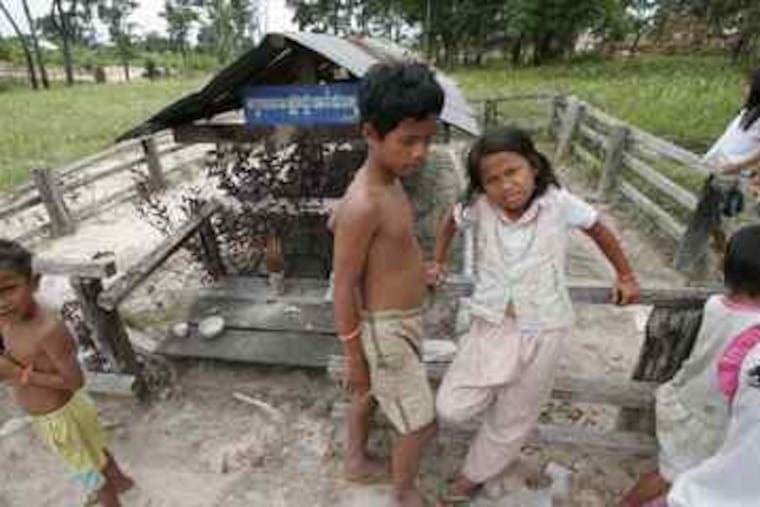Pol Pot's grave seen as lucky
ANLONG VENG, Cambodia - He was one of the worst mass killers of the 20th century, but that doesn't stop the hopeful from praying at Pol Pot's hillside grave for lucky lottery numbers, job promotions, and beautiful brides.

ANLONG VENG, Cambodia - He was one of the worst mass killers of the 20th century, but that doesn't stop the hopeful from praying at Pol Pot's hillside grave for lucky lottery numbers, job promotions, and beautiful brides.
Nor does it stop tourists from picking clean the bones and ashes from the Khmer Rouge leader's burial ground in this remote town in northwestern Cambodia.
The grave is among a slew of Khmer Rouge landmarks in Anlong Veng, where the movement's guerrillas made their last stand in 1998 just as Pol Pot lay dying. A $1 million tourism master plan is being completed to preserve and protect 15 of the sites, and charge admission.
Included in the tour will be the houses and hideouts of the Khmer Rouge leaders, an execution site, and places associated with Ta Mok, a brutal commander and Anlong Veng's last boss.
"People want to see the last stronghold of the Khmer Rouge and places where they committed atrocities," says Seang Sokheng, an ex-Khmer Rouge soldier who heads the district tourism office.
Anlong Veng, he says, receives about 2,000 Cambodian and 60 foreign tourists each month - a number that should jump when a casino is built by tycoons from nearby Thailand. A museum is also in the works, spearheaded by Nhem En, the chief photographer of the Khmer Rouge's S-21 torture center in Phnom Penh, a major tourist attraction for years.
"There are museums about World War II in Europe, and people are still interested in Hitler. Why not about one of the world's most infamous leaders?" asks Nhem En, the deputy chief of Anlong Veng district. The museum will include his extensive photo collection and even a rice field to show visitors how people slaved under Khmer Rouge guns during their mid-1970s reign of terror.
Like virtually everyone here, he says he took no part in the atrocities but blames the top leaders.
"Pol Pot was cremated here. Please help to preserve this historical site," reads a sign next to a mound demarcated by bottles stuck in the ground and protected by a rusting, corrugated iron roof. A few wilting flowers sprout around the unguarded grave site, which officials complain has been virtually stripped of Pol Pot's cremated remains by foreign tourists.
"People come here, especially on holy days, because they believe Pol Pot's spirit is powerful," says Tith Ponlok, who served as the leader's bodyguard and lives near the burial ground.
Cambodians in the area, he says, have won an unusual number of lotteries, prompting Thais to come across the border and beseech Pol Pot to reveal winning numbers in their dreams. Government officials from Phnom Penh and others also make the pilgrimage, asking his spirit to make wishes come true.